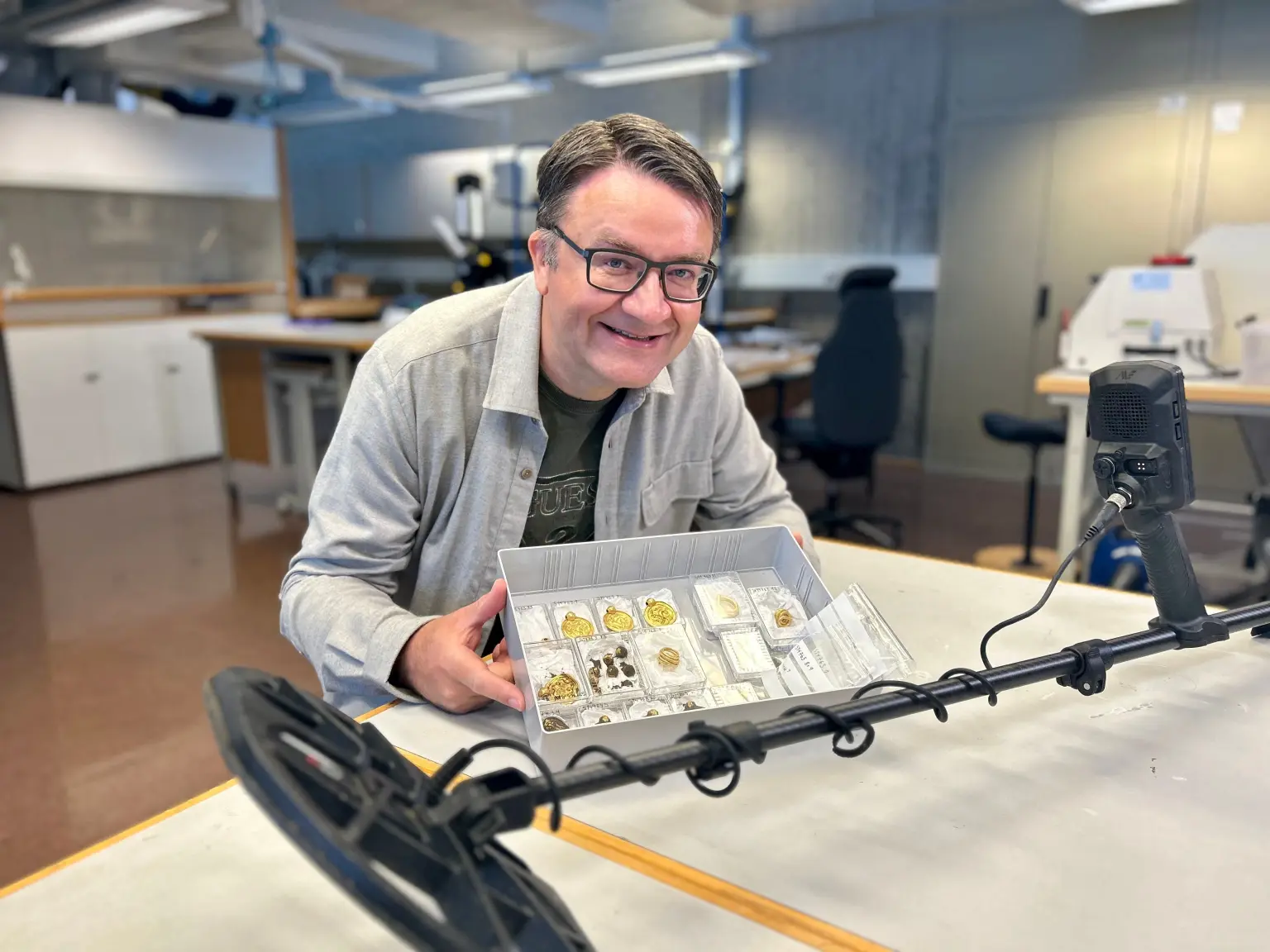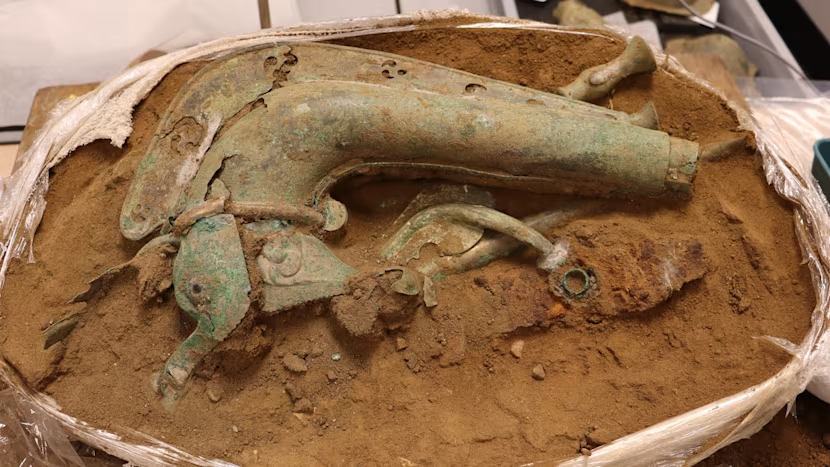A Norwegian using a recently purchased metal detector discovered rare 6th-century gold jewelry, which archaeologists described as Norway's "gold find of the century" on Thursday. The Norwegian went out strolling on the recommendation of doctors.
Norwegian man Erlend Bore discovered 6th-century gold jewelry while he was walking with a metal detector.
“At first I thought it was chocolate coins or Captain Sabertooth coins,” said 51-year-old Erlend Bore, referring to a fictional Norwegian pirate. “It was totally unreal.”
The cache included three gold rings, nine Norwegian gold medallions, and gold pearls that originally made up an elaborate necklace.
Archaeologists say the find is unique because it contains a design of a Norse mythological horse.
The design on the medallions, which is said to be a species of horse from Norse mythology, makes the discovery special in the eyes of archaeologists.
Erlend Bore bought the metal detector because his doctors told him to get more exercise.
After purchasing a metal detector on the advice of his doctors, Bore, who as a child wanted to be an archaeologist, made the discovery in August on a farmer's field close to Stavanger.
After a day of looking, he was about to return home when the device started beeping suddenly on a hillside.
Erlend Bore made the discovery near a farmer’s land.
He made a call, and archaeologists took charge of the hunt.
The diamonds, which have a weight of a little over 100 grams, are thought to have been made around 500 AD.
The jewels date back to around 500 AD.
“It’s the gold find of the century in Norway,” said Ole Madsen, the head of the University of Stavanger’s Museum of Archaeology. “To find that much gold all at once is extremely unusual.”
Experts are calling it “the gold find of the century.”
The newest comparable discovery in Norway is from the 19th century.
Experts say that finding this much gold in one location is very rare.
“Given the location of the discovery and what we know from other similar finds, this is probably a matter of either hidden valuables or an offering to the gods during dramatic times,” Professor Hakon Reiersen said.
According to Norwegian legislation, a reward will be given to both Bore and the landowner, albeit the amount has not yet been decided.












